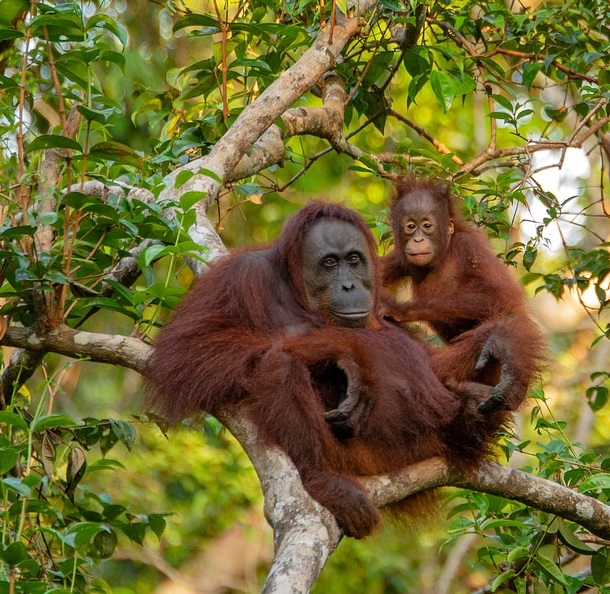
It’s time to face the facts. In this post-truth era, it’s not what we say that matters, it’s how well we say it.
The stream of scientific falsehoods coming directly from leaders (“the noise of windmills causes cancer” being a personal favourite [1]) is testament to the fact that a compelling narrative can generate widespread support, even in the absence of evidence.
It’s for this very reason that the scientific community has historically frowned upon the use of narrative to communicate research to the public [2]. After all, why use a tool that can be wielded to distort the truth, when you could let the truth speak for itself?
The answer lies in how we make sense of the world we live in.
When it comes to processing new information, social scientists typically refer to two cognitive pathways: the paradigmatic pathway, which processes science-based evidence (facts), and the narrative pathway, which processes situation-based examples (stories) [3]. It is thought that narrative cognition is the default mode of human thought and the foundation for our memory, as this is the pathway we use when we first learn about the world around us [4].
However, this inclination towards narrative processing continues throughout our lifetimes. Adults have been shown to recall new information twice as well and process it twice as fast when it is presented in the form of a story compared to when it is presented as a series of facts [5].
This heightened ability to recall and process new information using narrative cognition could be the result of an evolutionary advantage [6]. After all, listening to stories may have increased our ancestors’ chances of survival by helping them to model different scenarios, understand cause-and-effect, and inform their decision-making in potentially life-threatening situations.
But narrative has another trick up its sleeve. Besides providing a framework for new information, stories can also boost our engagement, make us question our previous understanding, and guide us towards a conclusion [7].

Blue Planet II is a perfect example of how a carefully crafted narrative can transform our attitudes towards an issue, in this case towards the well-known problem of plastic pollution. Since the series aired, it’s been reported that 88% of people who watched it have cut down on single-use plastics [8] and there has been mounting pressure on government and industry to implement policies aimed at reducing plastic pollution.
We’ve seen the efficacy of narrative in the food system too. Greenpeace’s simple poem about an orangutan in a little girl’s bedroom managed to generate mass awareness for the issue around palm oil-related deforestation, despite this information having been widely available for years [9].
Complex issues like these are pervasive across our food system. Whether it’s the impacts of climate change on future food availability, the underlying drivers of the obesity crisis, or the link between food prices and conflict, there are a host of problems that warrant a widespread societal response if we are to successfully transform our food system for health and sustainability.
However, the success of the anti-vax movement and the persistence of climate change denial highlights the danger of presenting new information without an evidence-based narrative: it creates opportunities for others to swoop in with false narratives. To combat both new and established anti-science narratives, we need scientists who can wield narrative not only in their defence, but also in offense. Recognising this growing need, the Global Food Security programme launched the Speak Up for Food Security competition for early career researchers working across the food system earlier this year.
The 12 finalists took part in a 2-day masterclass, where they received training in storytelling techniques and presentation skills. They were challenged weave their research into short, engaging narratives that communicated how their research addressed the wider food security challenge.
The initiative was met with great enthusiasm, indicating that this generation of scientists is keen to use narrative devices to communicate their research to the public. This is encouraging, because if evidence-based stories could generate public support for positive food system changes, it could greatly increase the pace of their uptake.

However, the role of narrative extends beyond public engagement.
As mentioned before, stories allow us to model different scenarios, understand cause-and-effect, and can be used to inform decision-making. In a rapidly changing world where we are increasingly faced with problems that we have never encountered before (e.g. man-made climate change, antimicrobial resistance and 8+ billion mouths to feed) stories are a useful tool for navigating future uncertainties [10].
For this reason, narrative is currently being used to support government policy making in the form of scenario exercises. The Global Food Security programme is running such a scenarios exercise on Paris-Compliant Healthy Food Systems. This exercise does not attempt to predict what will happen to our food system in light of certain events, but it aims to stimulate thinking, highlight potential threats and help shape long-term strategic policies.
Because it’s time to face the facts. If we rely on stories to make sense of the complex world we live in (and we do), then emerging from this post-truth era will require scientists who can create clear narratives around the evidence. Whether it’s through storytelling, poetry, films, or even just using the odd analogy or metaphor, in narrative we have an incredibly powerful tool at our fingertips.
All we have to do is wield it.
.
About the author
Maia Elliott is the Project Manager and Science Writer for the Global Food Security programme. She leads on the Paris-Compliant Healthy Food Systems scenarios project and set up the Speak Up for Food Security competition for early career researchers. Maia is passionate about raising the profile of the food security challenge through public engagement, and is particularly interested in the impacts of climate change on our food system.
References
- https://www.youtube.com/watch?v=qtKzcCJJfVw
- Katz Y (2013) Against storytelling of scientific results. Nat Methods 10(11):1045
- Monteagudo-Gonzalez J (2011) Jerome Bruner and the challenges of the narrative turn. Then and now. Narrative Inq 21(2):295–302.
- Schank RC, Abelson R (1995) Knowledge and memory: The real story. Knowledge and Memory: The Real Story, ed Wyer RS (Lawrence Erlbaum, Hilldale, NJ), pp 1–86.
- Graesser, A., Olde, B. & Klettke, B., 2002. How does the mind construct and represent stories?. In: M.Green, J. Strange & T. Brock, eds. Narrative impact: Social and cognitive foundations. Mahwah, NJ: Lawrence Erlbaum., pp. 229-262.
- Oatley K (1999) Why fiction may be twice as true as fact: Fiction as cognitive and emotional simulation. Rev Gen Psychol 3(2):101–117.
- Green MC, Brock TC (2000) The role of transportation in the persuasiveness of public narratives. J Pers Soc Psychol 79(5):701–721
- Waitrose & Partners Food and Drink Report 2018-19
- https://www.campaignlive.co.uk/article/icelands-rang-tan-ad-hits-30m-online-views-prompts-petition/1498682
- https://www.gov.uk/government/publications/futures-toolkit-for-policy-makers-and-analysts




Maia,
I very much enjoyed your article. I am a Climate Reality Leader who intuitively understands that people don’t ‘get’ the facts. They need to be engaged at an emotional level. For technocrats like me, this is a real challenge. When I make presentations, I’m usually restricted to presenting science ‘facts’ and occasionally expert projections. But, like you say, stories are what people remember. And, if I were to construct a narrative around the Future under Climate Change, it could be construed as Science Fiction or Alarmist. Time for me to saddle up and try! Keep up the good work – Jeff Rogers.
Thanks Jeff, I really appreciate it!
‘Alarmist’ is such an interesting word. The climate science is indeed alarming, but somewhere along the way we were encouraged to communicate science without feeling to remove that sense of alarm (thereby omitting key information) and communication that sought to trigger emotion was branded biased or alarmist. Feeling is what drives people to act though, not facts alone, so I am convinced that this has been a key contributor to decades of climate inaction.
Alarm is an uncomfortable emotion, but we know that the more we are (carefully) exposed to a trigger, the less alarming the trigger becomes. Early exposure is even better, and now that kids are learning about climate change as part of the curriculum I am hopeful that the days of denying the emotional level of the message are drawing to a close.
Good luck in your work!